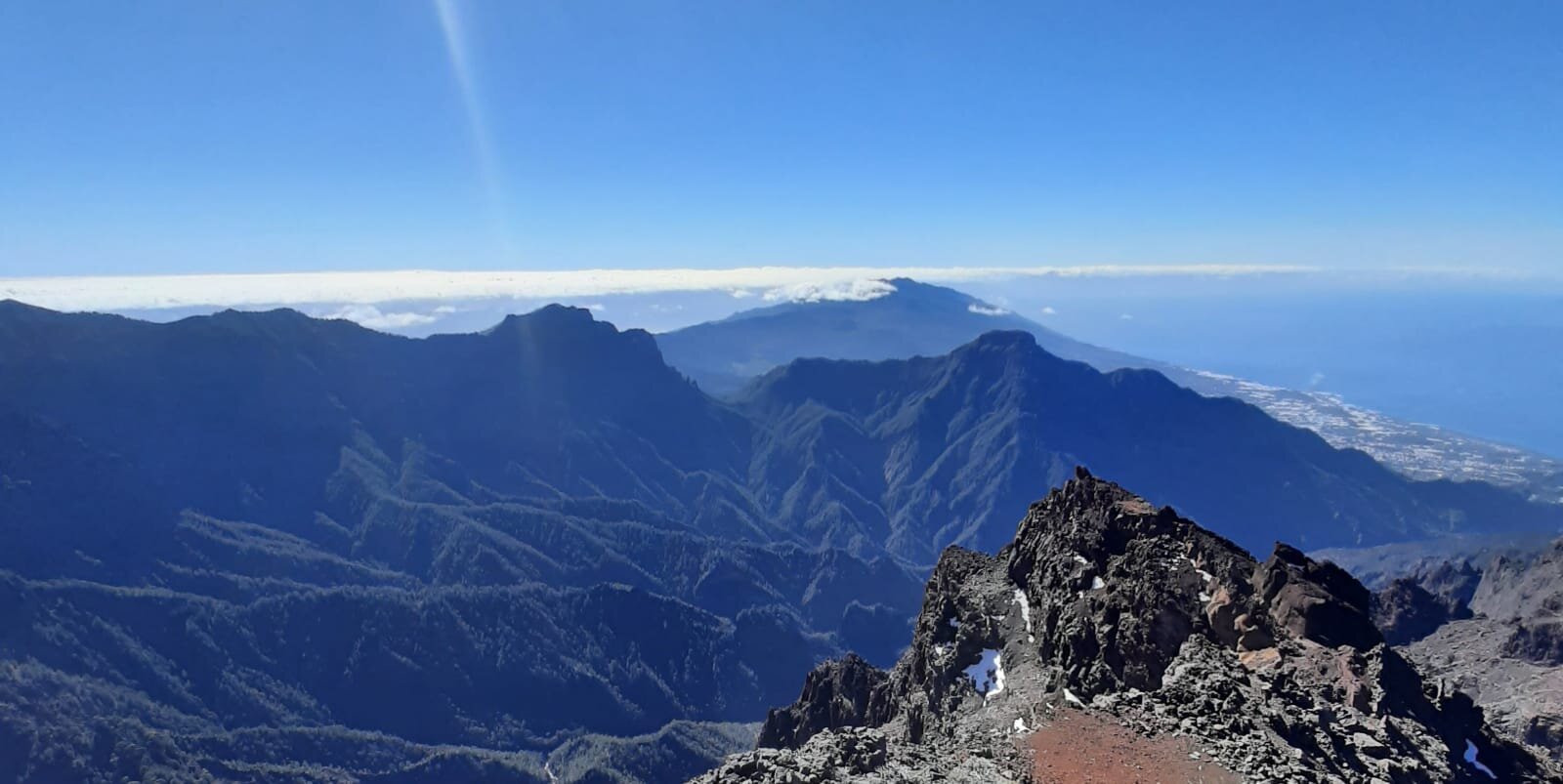
La Palma
In the months of January and February of 2021 we visited the Canary Island of La Palma. In the exact 10 weeks we have been there, we have had extensive time to get to know the island in all its facets.
Read below about our experiences and adventures on La Palma.
La Palma
From January 4 to March 15, 2021, we spent 10 wonderful weeks exploring the Canary Island of La Palma. As part of our plan to escape the winter of 2020/2021, the Canary Islands were an obvious choice—offering a safe destination during the Covid-19 situation and a chance to immerse ourselves in the unspoiled charm of La Gomera, La Palma, and El Hierro. These smaller islands, often overshadowed by their more touristy neighbors, promised tranquility, stunning nature, and authentic experiences. After a ferry ride from La Gomera, we arrived in La Palma on January 4 and began our journey with a week in a cozy little apartment in Brena Baja on the island’s east coast. From there, we set out to familiarize ourselves with the island’s many charms.
Our second week was spent in Tijarafe, a quaint village perched on the north side of the west coast. We quickly learned that the west coast is often sunnier and warmer—perfect for exploring! We stayed in a lovely authentic house at an altitude of 600m, which is typical for La Palma due to its dramatic geology. While daytime temperatures in January were pleasantly around 18°C, evenings could get chilly, adding a cozy charm to our stay. Highlights that week included visits to Poris de Puntagorda and Poris de Candelaria, as well as a memorable hike to Los Tilos with its beautiful waterfall.
For the remainder of our time, we settled into Las Indias, a peaceful spot on the southwest coast just north of the island’s southern tip. After some searching, we found the perfect long-term accommodation—Balcon Atlantico. Initially booked for four weeks, we extended our stay to eight, captivated by its spacious layout, stunning outdoor area, and breathtaking views of the Atlantic Ocean. Watching countless sunsets from our terrace became a daily highlight.
Las Indias proved to be an excellent base for exploring the island. Close by, we enjoyed visiting the San Antonio and Teneguia volcanoes, the Fuencaliente lighthouse, and the beaches of Zamora and Puerto Naos. From here, we ventured across the island, embracing its diversity with ease—even if it meant driving a bit further. With no schedule holding us back, every journey became part of the adventure.
La Palma left an indelible mark on us. The island’s stunning variety of landscapes, from lush forests to volcanic terrain, offers something for every nature lover. The mild winters make the coastal areas ideal, while the cooler mountain air provides a refreshing balance. In summer, the coast warms up while the higher altitudes remain pleasantly cool. And the people? Warm, friendly, and always welcoming, they made us feel at home from day one.
La Palma will always have a special place in our hearts!
La Palma Blog posts

Poris de Candelaria
Poris de Candelaria, a gigantic watercave under an impressive cliff, is one of the most beautiful places to visit on La Palma

Winetasting on La Palma
On La Palma grapes are grown to produce wine, so we visited one of the wineries for a guided tour and a very enjoyable wine tasting

Caldera de Taburiente
During our 10 week stay at La Palma we have visited the national park Caldera de Taburiente several times and did some fantastic hikes

Palmerita Cafe: Discover this Great Vegan Cafe
At La Palma we discovered the great vegan cafe Palmerita Cafe in La Laguna. A lovely cafe with delicious plant-based dishes and very friendly owners and staff

Storm Filomena
During our first week on La Palma we had to deal with Storm Filomena. The storm set rainfall records on La Palma and caused a huge mudslide
